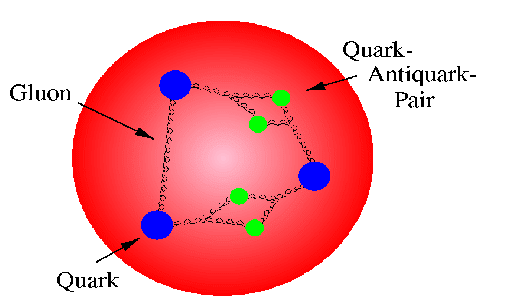Protons are spin-½ fermions, with a charge![]() and mass
and mass![]() and made of two up quarks and a down quark held together by the strong force, mediated by gluons.
and made of two up quarks and a down quark held together by the strong force, mediated by gluons.

Being fermions, they obey the Pauli exclusion principle.
Protons are stable with a half-life of at least![]() though grand unified theories generally predict that proton decay should take place. Though protons do not spontaneously decay, they are known to transform into neutrons through the process of electron capture .For free protons this process does not occur spontaneously but only when energy is supplied. The equation is:
though grand unified theories generally predict that proton decay should take place. Though protons do not spontaneously decay, they are known to transform into neutrons through the process of electron capture .For free protons this process does not occur spontaneously but only when energy is supplied. The equation is:
![]()
where![]() is a proton,
is a proton,![]() is an electron,
is an electron,![]() is a neutron, and
is a neutron, and![]() is an electron neutrino.
is an electron neutrino.
The process is reversible; neutrons can convert back to protons through beta decay, a common form of radioactive decay. In fact, a free neutron decays this way with a mean lifetime of about 15 minutes.
In quantum chromodynamics, the modern theory of the nuclear force, most of the mass of the proton and the neutron is explained by special relativity. The mass of the proton is about eighty times greater than the sum of the rest masses of the quarks that make it up, while the gluons have zero rest mass. The extra energy of the quarks and gluons in a region within a proton, as compared to the energy of the quarks and gluons accounts for over 98% of the mass.
